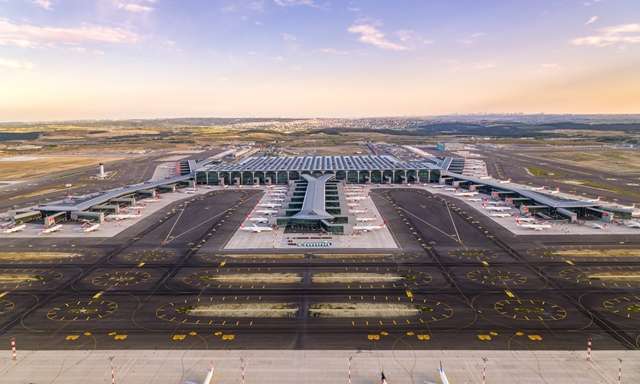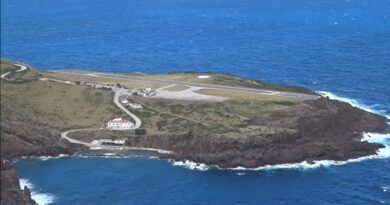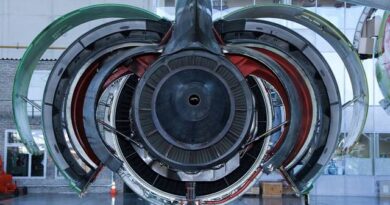Istanbul’s New Airport – IST: Soaring Success or Grounded Goals?
Opened in October 2018, Istanbul’s New Airport (IST) promised to be a game-changer, a gleaming gateway connecting East and West. But has it truly taken flight, or fallen short of its ambitious aspirations?
(29 October 2018 (ceremony) 6 April 2019 (all passenger services) 5 February 2022 (all cargo services))
Undeniably Impressive:
- Boasting size: Sprawling across a massive 7,600 hectares, IST dwarfs its European counterparts. Its single terminal, the world’s largest under one roof, can handle 90 million passengers annually, with a future capacity of 200 million.
- Top-notch facilities: Luxurious lounges, duty-free havens, and diverse dining options cater to every traveler’s whim. Art installations and green spaces add a touch of elegance.
- Efficiency reigns: Smooth passenger flow, streamlined customs, and advanced technology minimize layovers and maximize convenience.
- Connectivity kingpin: With over 350 destinations served by 90 airlines, IST seamlessly connects continents, solidifying Istanbul’s status as a global transit hub.
Tulip-inspired Air Traffic Control tower
Istanbul’s New Airport doesn’t just boast size and efficiency, it also possesses a crown jewel: the tulip-inspired Air Traffic Control tower. This 90-meter architectural marvel, designed by Pininfarina and AECOM, isn’t just a pretty face. Its sleek, aerodynamic form echoes the elegance of flight, while its advanced technology ensures the smooth flow of air traffic through the massive hub. Soaring above the landscape, the tower stands as a beacon of innovation and ambition, reflecting Istanbul’s own rise as a global aviation power. (some sources specify the tower’s total height as 109 meters, including the antenna mast.)

Green Aspirations, Grounded Realities
While IST prioritizes sustainability initiatives like rainwater harvesting and energy-efficient systems, its environmental impact remains a topic of debate. The vast construction project displaced wildlife and disrupted natural habitats, raising concerns about long-term ecological consequences. Balancing the needs of a thriving airport with environmental protection will be a crucial challenge, and IST’s commitment to ambitious green goals like achieving “zero waste” will be closely monitored in the years to come.
Challenges on the Horizon:
- Location hiccup: Nestled far north of the city center, accessibility remains a pain point. Ground transportation options, though improving, struggle to match the airport’s scale.
- Operational teething pains: Glitches in baggage handling and passenger processing systems, particularly during peak periods, can test even the most patient traveler.
- Shadow of Atatürk: The transition from the iconic Atatürk Airport hasn’t been entirely smooth. Some airlines and routes remain fragmented, causing confusion and inconvenience.
So, has IST landed its purpose?
The jury’s still out. It’s undeniably impressive, a shining symbol of Turkish ambition. But operational snags and accessibility hurdles cast a shadow on its full potential. Only time will tell if IST truly soars as a leading European airport or remains grounded by logistical challenges.
References and Further Reading Links
- “Is Istanbul’s New Airport Already a Bust?” (The New York Times) https://onemileatatime.com/istanbul-airport/
- “Istanbul New Airport Poised to Be a ‘Gateway of the World'” (CNN) https://www.cnn.com/travel/article/istanbul-new-airport-turkey/index.html
- “The Environmental Cost of Mega-Airports” (The Guardian) https://www.theguardian.com/environment/2021/mar/23/sweden-to-increase-airport-fees-for-high-polluting-planes
- “Mega Move: The Story of Turkish Airlines’ Great Migration” (Director: Emre Kayis) https://www.youtube.com/watch?v=YKL2q8AhcG0



